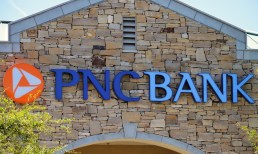According to PYMNTS’ Healthcare Payment Experience Report released earlier this year, 22 percent of patients who described themselves as “very” or “extremely” loyal to their current physicians or healthcare services would be willing to switch to competitors that offer improved digital communication tools, such as automated payment reminders; 54 percent of patients are interested in monitoring their upcoming provider payments digitally; 43 percent are willing to store their preferred payment details with their providers and another 43 percent would automate payments to avoid repetitive manual data entry in the office and online.
“All these things elicit the question: What can we be doing better to engage that consumer when they’re walking in the door and educating them? You don’t want that last impression being a surprise medical bill or a confusing medical statement, because it becomes a lasting impression of that healthcare provider,” InstaMed Chief Product Officer Jeff Lin told PYMNTS.
No Easy Fix
And while there is no easy, overnight fix that will quickly untangle the Gordian knot that healthcare payments has become, digitization can take a lot of the paper out of the system — and a lot of the pain along with it. As Lin noted, in healthcare, paper is more than just an annoying problem — it’s an anchor that weighs down the entire process, making it unnecessarily cumbersome and confusing for providers and patients alike, creating a world where often, people simply aren’t paying at all. And it’s not because the majority of people are looking to skip out on their medical bills, said Lin.
“According to a Federal Reserve survey, 40 percent of consumers couldn’t pay a $400 bill without selling some assets or getting a loan,” he noted. Meanwhile, deductibles swell while employers try to trim their own costs of providing healthcare to their employees.
Advertisement: Scroll to Continue
Patients want to do the right thing and pay their healthcare providers, but they need more flexible options to do so. A 2019 PYMNTS study showed that only 7 percent of consumers said they had no intention of paying their outstanding balance, with 90 percent saying they would do so if provided a more flexible payments option.
The goal of healthcare payments, Lin noted, must be to reward that instinct to pay and to make it easier to do so — not submit a patient to undue friction by making it hard for them to understand what they owe — and then offer a payment plan that helps them pay it.
There’s also friction on the part of the healthcare provider — as payments take longer to collect, the provider is forced to reconcile the patient’s payments with what they get from the insurance provider. The problem is further compounded by the large number of payments that still happen via paper checks, even when the time has long since passed for an upgrade to digital.
Healthcare As Fraud’s Honeypot
Beyond the speed and transparency that healthcare so clearly needs, there is also the increasing need to ensure security and safety in a segment that is slowly digitizing — and is becoming a ripe target for cybercriminals.
“In many aspects, healthcare is a honeypot for a lot of attackers,” said Lin. “It’s important to maintain safeguards on patient data and clinical data, to keep [the healthcare provider’s] brand secure and keep the organization from having a breach that would make headline news.”
Technology won’t be the panacea to cure all the ills in healthcare, particularly around payments, Lin noted. The path to wellness for the segment will also entail retraining staff to ensure efficient operations and to integrate changing workflows in the background while revamping the front-end experience. It will also mean providing the mobile connectivity and transparency that most patients report healthcare is lacking.
“Our vision is to continue to make sure experiences are simple and easy for the consumer, without requiring a lot of analog experiences like sending in a paper check or getting a mailed statement,” said Lin.



